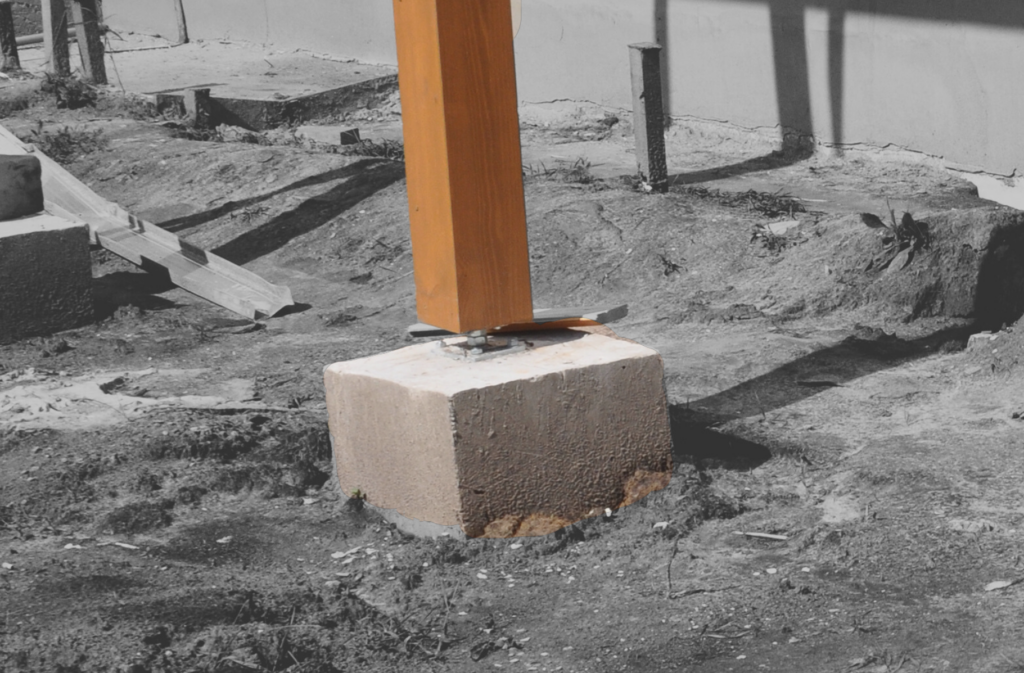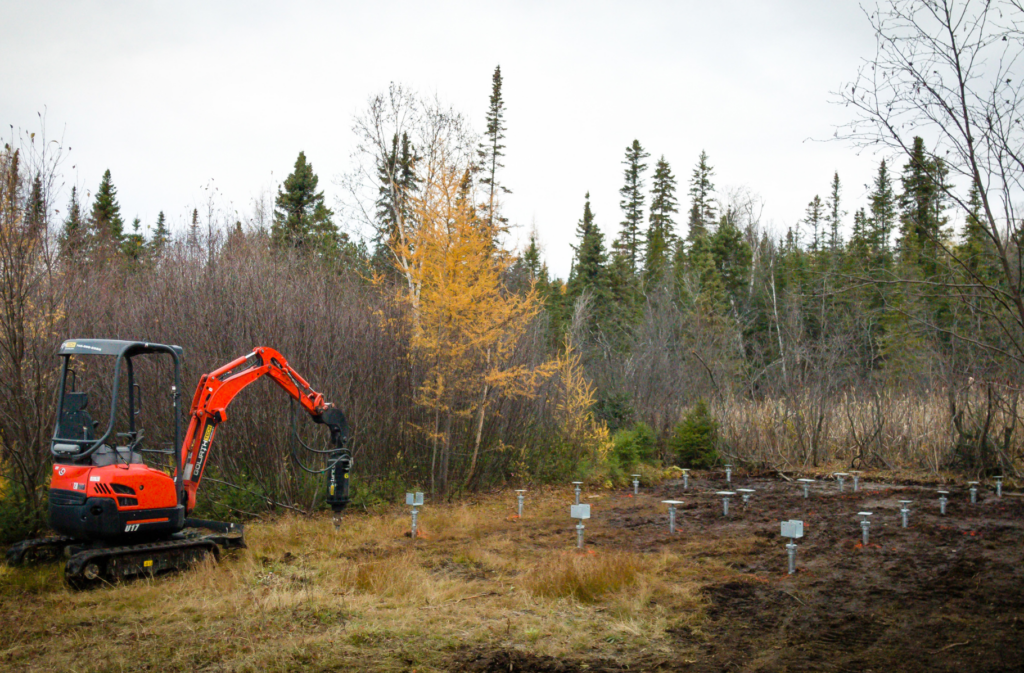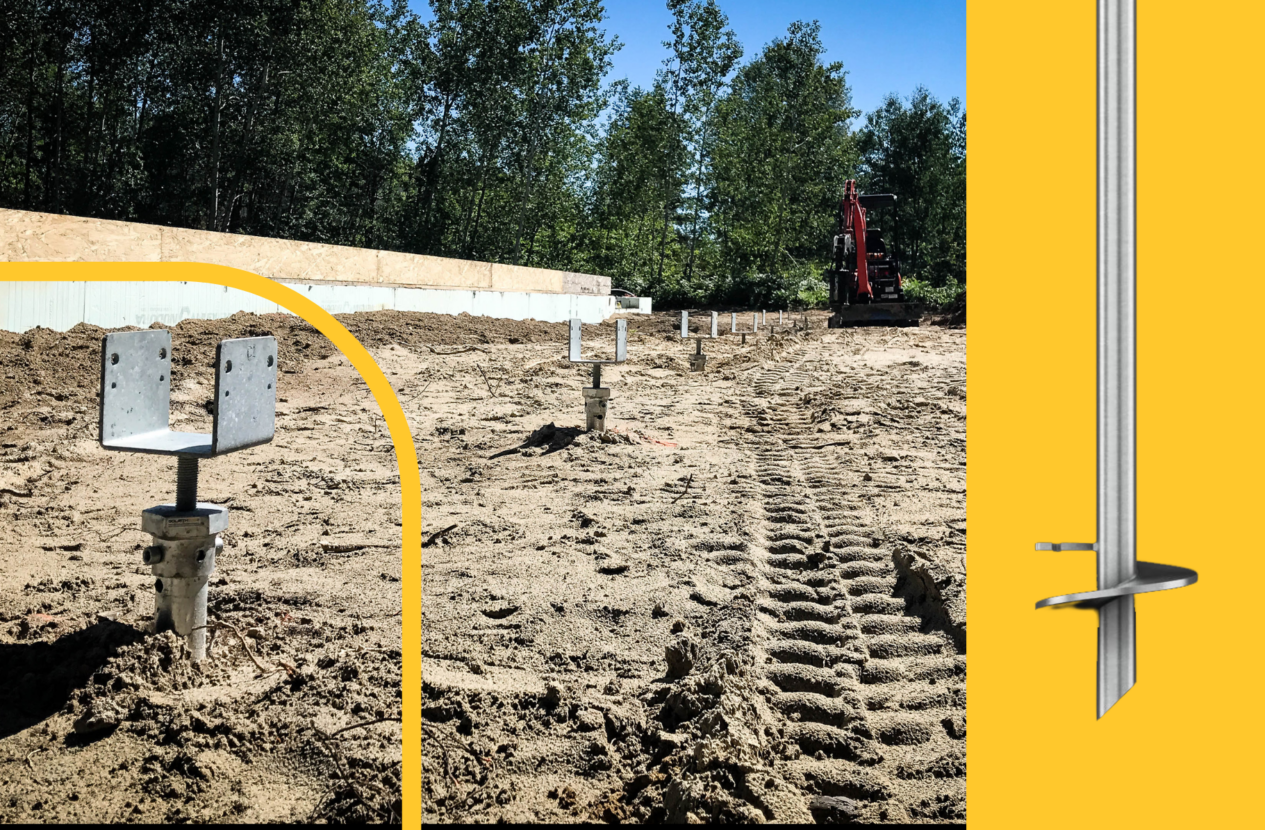
When embarking on a construction project, the foundation sets the stage for the entire structure. At the heart of a sturdy foundation (lies) concrete footings, integral players in the construction industry.
However, helical (piers) piles emerge as a compelling alternative, offering significant advantages .
They can also work in tandem with concrete footings for enhanced results.
As a construction business owner, understanding the nuances of these footings and the potential benefits of helical piles can significantly influence your project's success
Introduction to Concrete Footings: What They Are
Concrete footings, in essence, are the bedrock of a building. They form the crucial bridge between a structure, efficiently distributing the weight of the structure, ensuring stability and resistance against both sinking and external pressures.
Different Types of Concrete Footings with Pros and Cons:
Slab-on-Grade Footings
Slab-on-grade footings, as the name suggests, refer to a type of foundation where a concrete slab is poured directly on the ground, effectively making it the foundation of the structure.
Rather than being elevated or supported by pilings or piers, this slab rests directly on the soil (or "grade").
- Pros: Simple to construct, cost-effective, perfect for regions with stable ground and minimal frost concerns, low maintenance, and reduced excavation needs.
- Cons: Vulnerability to ground movement, can be prone to cracks if not adequately reinforced, potential for heat loss in cold climates.
Can Helical Piers (Piles) be Used with Slab-on-Grade Footings?
Helical piles or screw piles, can serve as a viable alternative to, or work in conjunction with, slab-on-grade footings in various construction scenarios. The helical piles with “rebar heads" can be installed in the form work and tied into the rest of the rebar. You get the convenience of building with concrete, with the guaranteed capacity of the helical piles.
In regions with poor soil conditions or in environmentally sensitive areas, helical piers can replace traditional footings, offering a stable foundation with minimal site disturbance.
When used in tandem with a slab-on-grade foundation, helical (screw) piles can enhance stability by anchoring the slab to deeper, more stable soil layers, thereby helping to prevent differential settlement—a common issue where different parts of a slab settle at different rates.
This dual approach can be particularly beneficial in regions prone to soil settling or heaving due to freeze/thaw cycles or expansive clays.
In all cases, consulting with a qualified engineer or foundation expert is essential to ensure safety and performance standards are met.
T-Shaped Footings
T-Shaped footings are a classic and widely adopted foundation type, especially suited for regions where ground freezes during winter.
Constructed in a three-tier process, the foundation starts with a footing placed below the frost line, followed by a wall built atop this footing.
The "T" takes shape when the slab, which forms the top of the "T", is finally poured, creating a broad base that rests on the subsoil and a vertical wall providing foundational support.
- Pros: Good for colder climates, the design combats frost heave, provides extra foundational strength, versatile in its application.
- Cons: More labor-intensive excavation, potentially higher costs, more materials involved.
Can Helical Piers (Piles) be Used with T-Shaped Footings?
Helical (screw) piles can also serve as an effective alternative to, or work in conjunction with, T-shaped footings.
When used alongside T-shaped footings, screw piles (helical piers) can enhance the overall stability and capacity of the foundation, particularly in cases with heavy or uneven loads, helping to prevent differential settlement of the foundation.
They can also be a valuable addition in retrofit or renovation projects to strengthen existing T-shaped footings without extensive excavation and disruption.
In all scenarios, consulting with a qualified engineer or foundation expert is essential to ensure safety and performance standards are met.
Strip Footings
Strip footings, often referred to as continuous footings, are designed to support a line of loads, typically due to a load-bearing wall.
These are essentially continuous strips of concrete that are laid beneath the entire length of a wall to distribute its weight over a broad area of soil.
Serving as the base for a wall's foundational elements, strip footings ensure that the structure's weight is evenly distributed to the soil
The continuous nature of this footing makes it ideal for supporting linear structures like walls, ensuring uniformity in weight distribution and stability throughout the length of the structure.
- Pros: Uniformly distributes loads, good for wall structures, allows for flexibility in wall placement, less concrete-intensive than some other types.
- Cons: Imperative for precision in installation, risk of water accumulation without effective drainage, can be more time-consuming.
Can Helical Piers (Piles) be Used with Strip Footings?
Helical (screw) piles are great alternatives or complements to traditional strip footings.
In challenging soil conditions—where traditional footings may require extensive excavation and soil preparation—helical piles emerge as a practical replacement.
Additionally, when added support is necessary, helical piers can be strategically integrated intostrip footings.
For instance, they can be installed at intervals along a strip footing, enhancing overall stability and reducing the potential for differential settlement and movement
This is especially beneficial in retrofit or renovation projects, where existing strip footings might need fortification to handle new loads or modifications.
In all scenarios, it is imperative to consult with a qualified engineer or foundation expert to ensure that the system designed meets all safety and performance standards.
Common Pitfalls and Mistakes
Ensuring a foundation's lifespan involves a balance of right actions and avoiding potential pitfalls:
- Inadequate Site Analysis: Overlooking soil type and bearing capacity can lead to misguided footing choices.
- Improper Drainage: Neglecting drainage can invite water to compromise the structure over time.
- Compromising on Quality: Opting for lesser-quality materials or hastening the curing phase can compromise the footing's long-term health.

Helical Piers (Piles): the New Foundation Solution
Helical piers, often referred to as helical piles or screw piles, are rapidly becoming a cornerstone in modern construction methodologies.
At a glance, these might seem like simple screw-shaped instruments, but their design and function hold the key to their increasing popularity.
Anchored deep into the ground, they penetrate multiple layers of soil to provide a rock-solid foundation.
What sets them apart is their unique helical design, reminiscent of a corkscrew. As they are driven into the earth, this design ensures a secure and tight grip, minimizing the risk of shifting or settling over time.
This mechanism offers an unparalleled level of support, stability, and load distribution for structures, from residential homes to larger commercial buildings.
Given these advantages, it's clear why screw piles are revolutionizing the way we think about foundational support in the construction industry.
Conclusion
While the value of traditional concrete footings are still current, the surge of innovative methods, notably the helical pier (pile) technology, heralds a new era in construction foundations.
Their blend of adaptability, robustness, and their low environmental footprint marks a significant shift in foundational work.
Progress demands evolution, and in the construction domain, embracing innovations like screw piles is a sure step towards a robust and sustainable future.
About GoliathTech
Since 2004, GoliathTech has been the most important manufacturer and installer in the helical (screw) pile industry worldwide. Our patented helical pile foundation system surpasses industry standards and has earned us multiple awards and prizes.
Carried out by certified installers, our quick installation process avoids excavation, which protects your landscape and allows you to begin building as soon as the piles are in the ground. Moreover, you can anchor GoliathTech’s helical pile foundations into any soil or space year-round. Installed deep into the ground, beneath the frost line, they solidly support the structure in even the most extreme conditions. Our technology guarantees that a helical (screw) pile foundation won't move or crack over time.
Integrating both strength and know-how, GoliathTech offers the best anchoring solution to support your residential, industrial, commercial, and municipal projects. Trust the experience and expertise of GoliathTech for your foundation projects. Find a certified GoliathTech installer in your region or become a franchisee.
Share this Article


